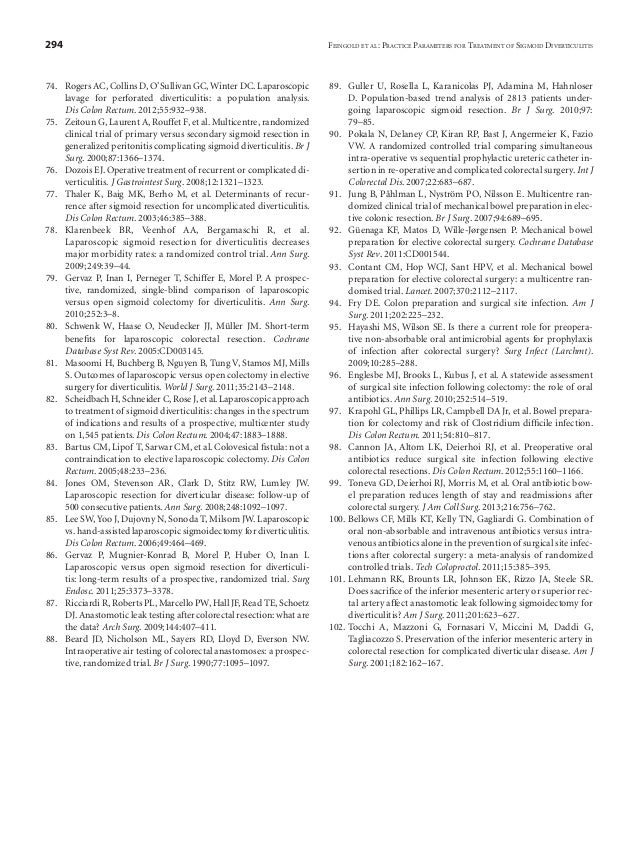
Once the patients were fully re-equilibrated and signs of local and systemic inflammation regressed, partially or completely (48–72 h from admission), a SEMS was placed. The aim of our study was to report our experience with SEMS placement to relieve sigmoid obstruction secondary to diverticulitis, either as a permanent solution or as a bridge to elective colectomy. After stenting, a complete colonoscopy with multiple biopsies may be performed to exclude the possibility of cancer. The stent may represent a definitive solution in high risk patients who present a significantly reduced life-expectancy, or a bridge to an elective resection. The stent can be placed in elective conditions, in a proper environment. In this situation, the placement of self-expandable metal stents may represent a valid temporary choice, reducing the risks related to the complexity of a therapeutic approach for an acute or subacute clinical condition. The reasons for high rates of permanent colostomies are multifactorial, including advanced age or the poor general condition of the patient. Between 20–50% of patients treated with sigmoid resection and an end colostomy for severe diverticulitis will never be reversed to their normal anatomy. Even if surgical resection often appears to be a simple and straightforward solution of the problem, either from a diagnostic or a symptomatic point of view, often, the inflammation of the colon is more extended than expected and management of the patient with an end colostomy (Hartman procedure) may represent a wiser choice.

A differential diagnosis between obstruction secondary to diverticulitis or secondary to cancer is not always feasible, despite endoscopic and multiple biopsies. Resection of diseased bowel to healthy proximal colon and rectal margins remains a fundamental principle of treatment. Colonic symptomatic strictures are often treated with segmental colectomy. Complicated diverticulitis is defined as diverticulitis associated with localized or generalized perforation, localized or distant abscess, fistula, stricture or obstruction. Uncomplicated diverticulitis is characterized by inflammation limited to the colonic wall and surrounding tissue. Diverticulitis can be further sub-classified into complicated and uncomplicated presentations. Besides increasing age, other risk factors for diverticular disease include the use of NSAIDS, aspirin, steroids, opioids, smoking and sedentary lifestyle. The incidence of diverticulitis is increasing in Western countries. Eighty-five percent of episodes of acute diverticulitis are uncomplicated (defined by absence of abscess, bowel obstruction, perforation, or fistula formation). Of those with diverticulosis, the lifetime risk of developing diverticulitis is estimated at 10–25%, although more recent studies estimated a 5% rate of progression to diverticulitis. SEMS placement makes it possible to transform an emergency clinical condition into an elective condition, giving time to resolve the inflammation and the infection inevitably associated with complicated diverticulitis.ĭiverticular disease of the colon is a common condition 50% of people over the age of 60 have colonic diverticula. Conclusions: Placement of Colorectal Self Expandable Stent represents a useful tool to relieve obstruction in patients with left-sided colonic diverticulitis. Results: There was no mortality or major morbidity after SEMS placement or subsequent elective colectomy. Primary outcomes were postoperative mortality and morbidity after SEMS and subsequent elective colectomy. Data were prospectively collected and retrospectively analyzed.

In 17 patients, the stent was placed as bridge to elective colectomy. In four patients with poor general conditions, SEMS was considered the definitive form of treatment. Material and Methods: From January 2016 to December 2018, 21 patients underwent SEMS placement for sigmoid obstruction secondary to diverticulitis at our institution. The aim of our study is to report our experience with Self Expandable Metal Stents (SEMS) placement to relieve sigmoid obstruction secondary to diverticulitis, either as a permanent solution or as a bridge to elective colectomy. Background and Objectives: The incidence of diverticulitis is increasing in western countries.


 0 kommentar(er)
0 kommentar(er)
